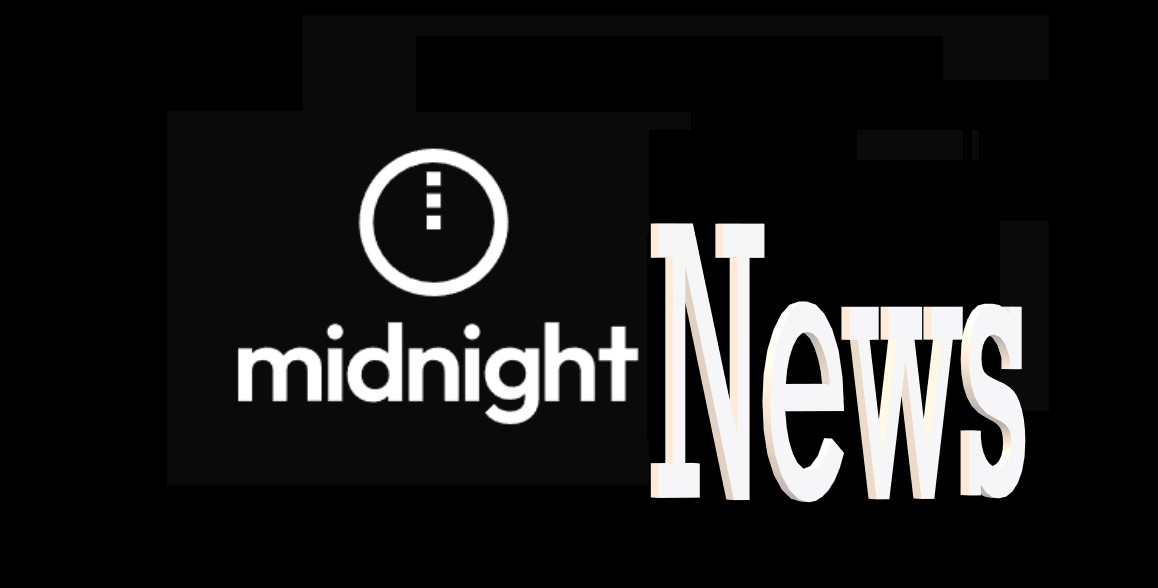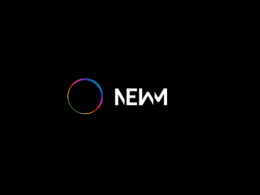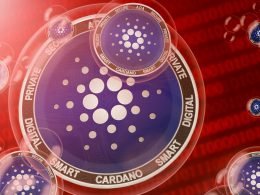The community has some confusions about Midnight that deserve clarification.
Is Midnight a Cardano-independent blockchain, or is it a sidechain?
Is Midnight a privacy proposition or is it a platform to develop regulator-compliant DApps?
Well, Midnight is all that. It is an independent blockchain, with the technical characteristics of a sidechain, but associated with Cardano, according to IOG’s definition. It is designed as a data protection platform to develop and run decentralized applications, but complying with regulations.
First I will analyze Midnight in more detail, and then tell you the news of its evolution.
At the end of this article, I leave two previous AdaPulse posts so you can deepen your knowledge about Midnight, one of mine (1) and another from my colleague LatinStakePools (2).
Understanding Midnight
After more than four years of research, Midnight was announced publicly by IOG for the first time during the IO ScotFest from Edinburgh, in November 2022.
At that event, Charles Hoskinson, CEO of IOG, said: “We need systems that provide people with the freedom to work, collaborate and interact while maintaining control and autonomy over data. When we don’t have these basic rights, our ability to connect with the rest of the world is hampered or controlled by forces beyond our control.”
The Midnight programming model, including its domain-specific language and midnight.js client library, is an embodiment of ideas first published in the research paper Kachina, published in May 2021.
Midnight is designed as a Cardano-associated blockchain, benefiting from Cardano’s security structure. Cardano stakepool operators can also choose to become Midnight block producers.
Midnight is a blockchain designed for the creation of smart contracts and Decentralized Applications (DApps), providing new data protection and metadata shielding capabilities, using Zero-Knowledge technology.
In Zero-Knowledge Protocol (ZKP), one party, the prover, can prove to another party, the verifier, that it possesses certain secret information without revealing the information itself. This protocol is crucial in scenarios where sensitive data exists, such as in authentication systems.
With this technology, DApps can be transparent when required by regulatory compliance, while protecting sensitive data in any other case. IOG’s proposal is to preserve personal data, and only display what is required to comply with laws and regulations such as the General Data Protection Regulation (GDPR), the Health Insurance Portability and Accountability Act of 1996 (HIPAA), and the California Consumer Privacy Act. /California Privacy Rights Act (CCPA/CPRA), and Sarbanes-Oxley Act (SOX).
Midnight uses a language designed to integrate with TypeScript, familiar to thousands of developers, and has a plug-in for Microsoft Visual Studio Code.
In the following table you can see the characteristics of Midnight compared to blockchain technology and cloud computing:
Some uses of Midnight decentralized applications that the developers mention can be:
- Identity verification: by using Midnight as a shared data protection platform, it is possible to reimagine how Know Your Customer (KYC) and Anti Money Laundering (AML) compliance could be achieved, since with ZKPs there is no need to disclose any information to the customer of the service apart from the veracity of the statement, complying with regulations and at the same time safeguarding personal identification information.
- Controlled access to tokenized digital assets: Non-fungible tokens (NFTs) are increasingly used to represent assets, credentials, receipts, or even loyalty attributes, which can be tracked on a public ledger for any party to view, designing data protection to allow tokenized assets to remain private and at the same time, information necessary to perform certain activities can be revealed.
- Improving Artificial Intelligence (AI) and Large Language Models (LLM): the need for artificial intelligence capabilities depends on training data. Some come from public sources, but others may be from proprietary content or royalty-bearing licenses. The authenticity of the work, or private data that the owners do not want to share with third parties, is also key. To address these challenges, Midnight can help establish secure and private interactions with AI and LLM to safeguard the confidentiality of data models and improve the reliability and quality of results while maintaining the privacy of source information, as required by law.
- Decentralized credit scoring: this is an important prerequisite for financial institutions to lend to individuals, and typically requires the disclosure of a large amount of personal information. Once disclosed, the information is costly for receiving organizations to process and store, with the risk of it being leaked to malicious actors. Midnight’s ZK technology can verify a claim without revealing further information.
- Decentralized Anonymous Voting: currently a voter must provide identification to demonstrate that they are qualified to vote, and that identification may contain other personal information that exceeds the necessary needs that qualify them as a voter. With a DApp that uses Midnight’s ZK technology, voters will be able to demonstrate their eligibility to vote, without revealing unnecessary information.
Midnight News
Normally, the stages of a project evolve from execution on a devnet (development network), then on a testnet, and ultimately, on the mainnet.
The devnet is an initial environment where developers can experiment, identify, and fix problems, fine-tuning their applications, without affecting real users or assets.
The testnet is a more mature environment for testing application functionality, where minor adjustments are typically required.
In the article Calling trailblazers to Midnight, published in October 2023, IOG invited 100 pioneering development teams to start testing and development on a devnet. The Midnight devnet went live on November 13, 2023, providing early pioneer teams with a development environment in which to experiment.
In a later official article, Exploring the Midnight devnet, IOG explains that the Midnight devnet offers a unique opportunity to experiment with developing data protection applications. The devnet is designed to serve both blockchain developers and those who have limited or no experience with blockchain technology.
One of Midnight’s goals is to offer an accessible programming language that allows developers from various fields and sectors to create decentralized applications.
To do this, in that environment, Midnight allows developers to write smart contracts with Compact, a domain-specific smart contract programming language designed for data protection that integrates seamlessly with TypeScript.
Although it looks like TypeScript on the surface, Compact functions as a more restricted language that exists alongside it. Certain basic TypeScript features were intentionally left out to allow for the necessary testing and analysis that Midnight requires.
The process of creating these smart contracts is very similar to creating a unit test in TypeScript. The part of the DApp that does not interact with the blockchain is written in regular TypeScript.
tDUST is the token of the Midnight devnet, for exclusive use in that environment, so that users and developers can pay transaction fees, and can use DApps built there. These tokens can be obtained by request using the devnet faucet.
According to the company developer, these Midnight pioneers were able to experiment with building data protection smart contracts, using the Compact language and compiler, to test their data protection DApps locally, deploy them to devnet, and share them with other devnet users.
They were also able to store, manage, and interact with Midnight assets and DApps directly within the Google Chrome web browser using a Midnight version of the Lace wallet. They had to pay transaction fees and move devnet tokens tDUST shielded peer-to-peer within devnet.
In the specific model of the devnet environment, they were able to create ZK tests and perform ZK calculations, using local test generator software to facilitate the submission of secure transactions and test data by clients.
On February 26, 2024, following the success of the devnet with the initial developers, the Midnight devnet became publicly accessible to developers.
The Midnight devnet is primarily aimed at DApp developers, from developer organizations to entrepreneurs. Developers can experiment with the network and give feedback, creating applications that include data protection, shielded swaps, and smart contracts. This collaborative environment helps identify potential issues and improvements in DApps under development. The team also invites researchers and enthusiasts to explore and contribute to the ecosystem.
Midnight is in development, and some of its features are still being explored. As a result, the devnet offers developers the opportunity to influence the Midnight product roadmap and share their desires and frustrations when working with sensitive data.
Participating individuals and teams will get the most out of the devnet if they have a vision for a DApp with specific data protection needs, knowledge and experience in TypeScript, and experience in blockchain and cryptography.
Between March 8 and 11, 2024, more than 200 developers gathered on the Oxford University campus to participate in the Hackathon. ETH Oxford hackathon. This event showcased innovative ideas and also served as the setting for Midnight’s first hackathon.
The winners of the Hackathon de Midnight were Imperial4, a team consisting of Grigorios Chatziandreou, Paul Pöhl, Rishabh Jain, and Edward Peterson, with their MediChain project, designed to revolutionize medical records management.
The next phase of Midnight development will be a public testnet, where there will be greater network stability and many features in its final form. No date has yet been released at the time of writing this article.
You can read the Midnight Docs.
. . .









